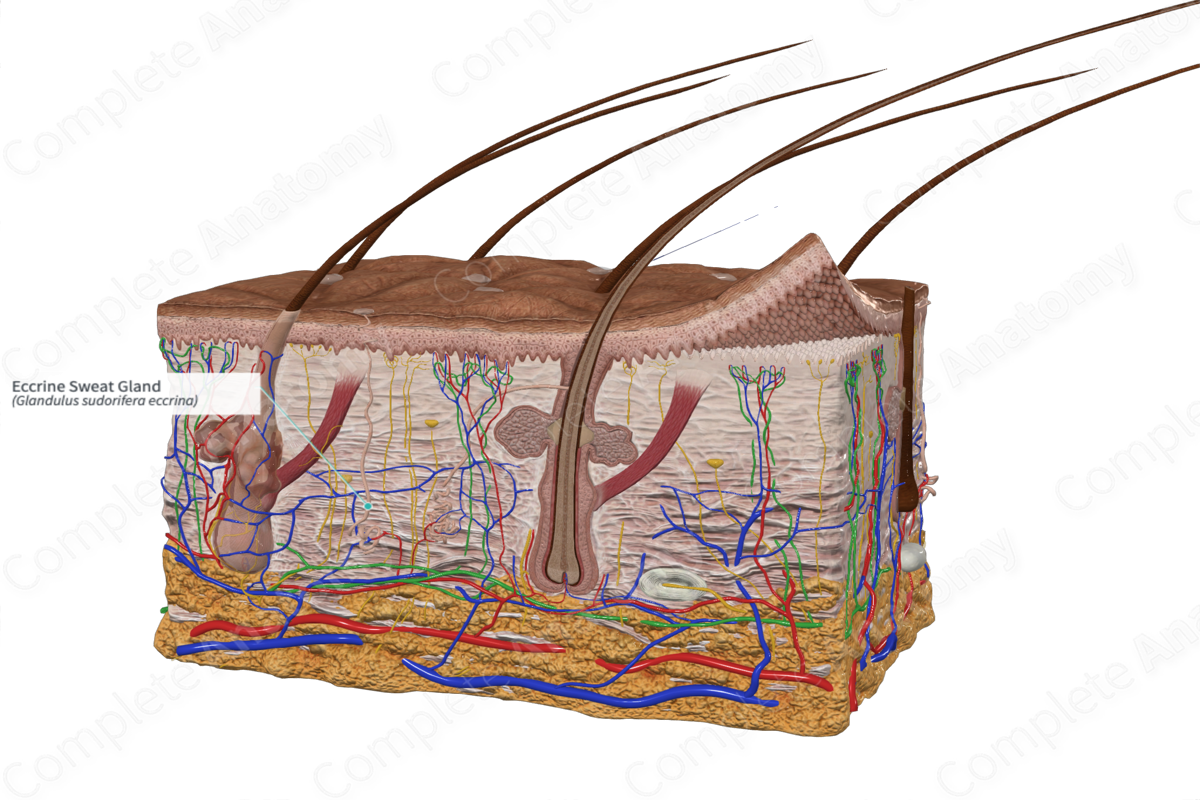
Quick Facts
An eccrine gland is an ordinary, or simple, sweat gland; they are sweat glands of the merocrine type—unbranched, coiled, tubular glands that are distributed over almost all of the body surface and promote cooling by evaporation of their secretion (Dorland, 2011).
Related parts of the anatomy
Structure/Morphology
The skin hosts many types of glands, such as sweat and sebaceous glands. Two types of sweat glands exist, namely the eccrine and apocrine sweat glands, and differ from each other in their size, histology, distribution, and function.
The secretory portion of the eccrine sweat glands are highly coiled, tubular glands found in the reticular layer of the dermis and upper part of the hypodermis. Unlike the apocrine glands, eccrine glands open directly on the surface of the skin. A secretory duct connects the highly coiled secretory portion of the gland to the epidermis and secretes the sweat contents through a sweat pore on the surface of the epidermis. It secretes sweat that is composed of water, electrolytes, proteins, and inorganic substances. Eccrine sweat glands are found on skin throughout the body, except for the lips and genitalia (Freinkel and Woodley, 2001; Lu and Fuchs, 2014).
Eccrine sweat glands are found on skin throughout the body, except for the lips and genitalia. In addition, the number of these glands increases in areas such as the palmar and plantar skin (palms of hands and soles of feet), the forehead, and the axilla. There are approximately 2–5 million eccrine glands over the surface of the adult body (Freinkel and Woodley, 2001).
Function
Sweating is an important function that regulated body temperature. The viscous watery sweat is secreted to the surface of the epidermis. As it evaporates, it dissipates thermal energy, or heat, from the skin, hence, why humans sweat more after exercise or in hot temperatures.
References
Dorland, W. (2011) Dorland's Illustrated Medical Dictionary. 32nd edn. Philadelphia, USA: Elsevier Saunders.
Freinkel, R. K. and Woodley, D. T. (2001) The Biology of the Skin. Taylor & Francis.
Lu, C. and Fuchs, E. (2014) 'Sweat gland progenitors in development, homeostasis, and wound repair', Cold Spring Harb Perspect Med, 4(2).
